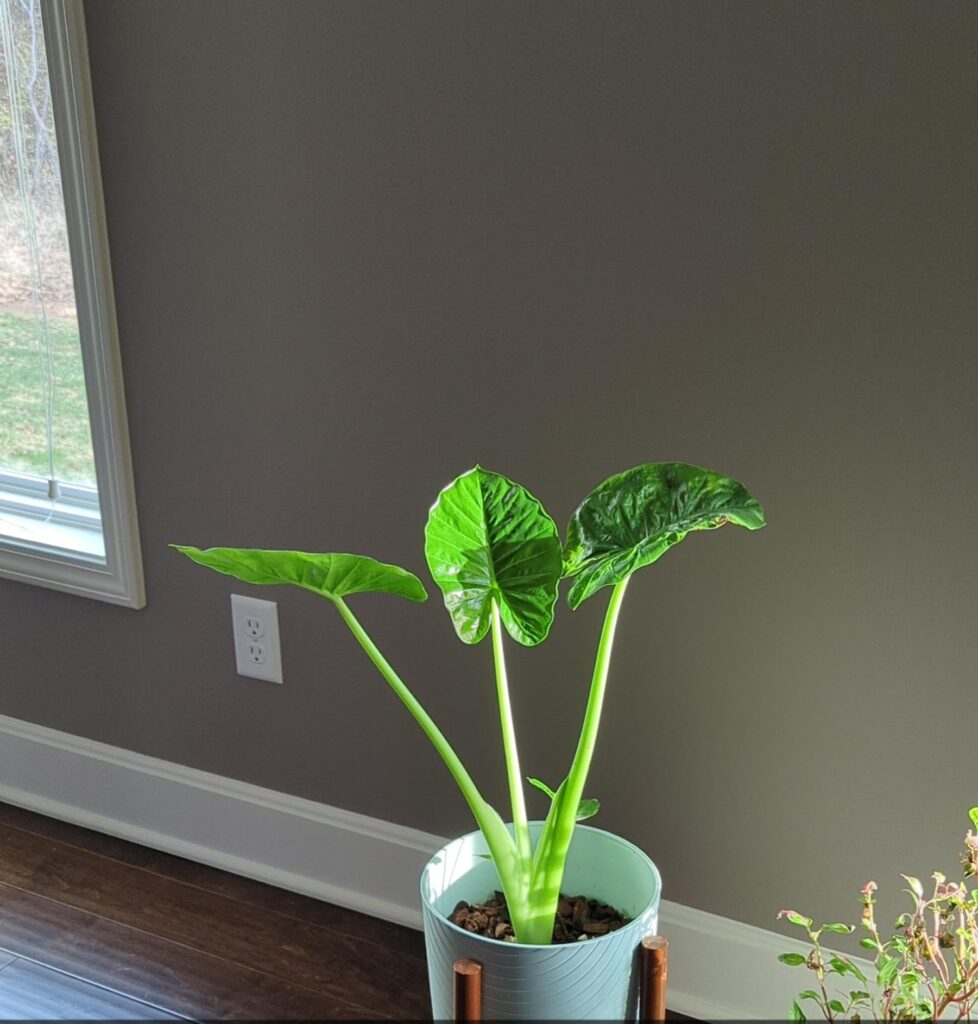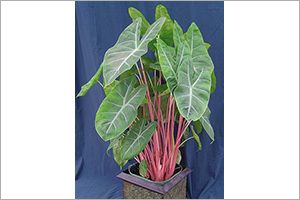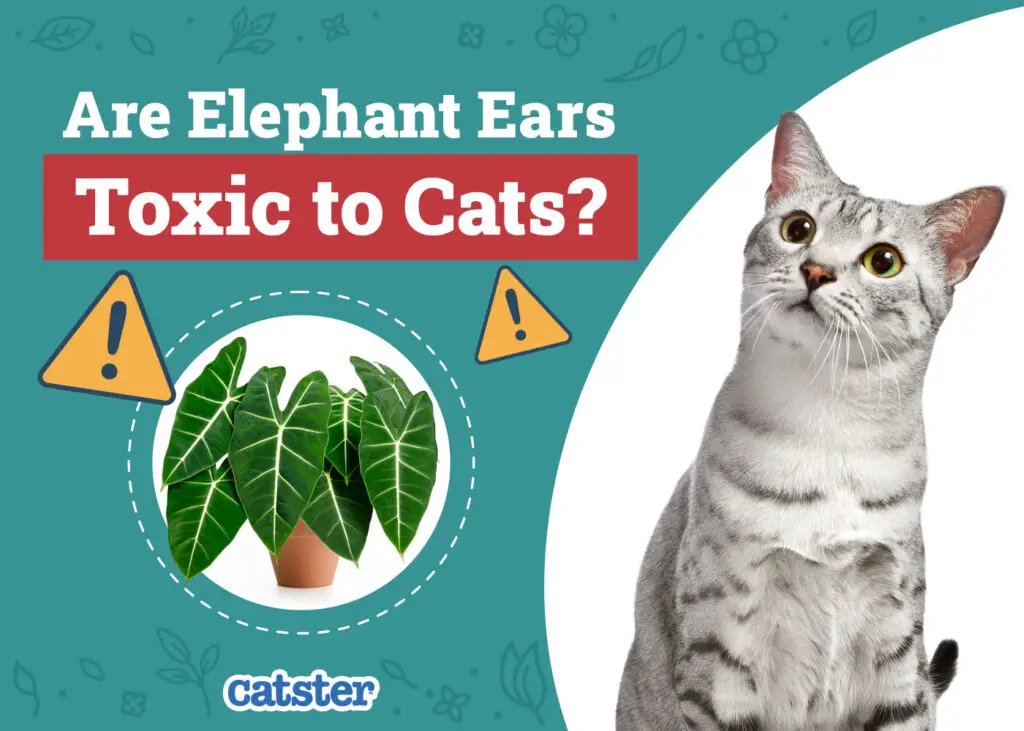Alocasia plants are considered toxic to cats. They contain calcium oxalate crystals, which can cause irritation and discomfort if ingested. Symptoms may include drooling, vomiting, and difficulty swallowing.
Understanding Alocasia Plants
Alocasia, also known as elephant ear plants, is a popular genus of tropical plants known for their stunning foliage and unique shapes. These plants are native to tropical regions of Asia and Australia. Their large, arrow-shaped leaves can add an exotic touch to any indoor or outdoor space. However, while they are aesthetically pleasing, it’s important for pet owners to be aware of their potentially harmful effects on cats.

One of the primary concerns with Alocasia plants is their toxicity levels. Many people are drawn to these plants for their beauty but may not realize the risks they pose to pets. Understanding the nature of these plants can help pet owners make informed decisions about their home environments.
Toxic Components of Alocasia
The toxicity of Alocasia plants primarily comes from calcium oxalate crystals. These needle-like structures are found in the leaves and stems of the plant. When a cat bites or chews on the plant, these crystals can be released and cause irritation to the mouth and throat.
When ingested, the calcium oxalate can lead to several unpleasant symptoms in cats:

- Drooling: Excessive salivation can occur as a result of irritation.
- Vomiting: Cats may vomit due to gastrointestinal distress.
- Difficulties Swallowing: The swelling in the throat may make it hard for them to swallow.
- Pain: Cats may show signs of pain or discomfort when trying to eat or drink.
Symptoms of Alocasia Toxicity in Cats
If you suspect that your cat has ingested parts of an Alocasia plant, it is crucial to monitor them for any signs of toxicity. The symptoms can vary depending on the amount consumed and the sensitivity of the individual cat. Here are some common symptoms to look out for:
- Oral irritation (pawing at the mouth)
- Swelling of the tongue or throat
- Loss of appetite
- Fever
- Lethargy
What to Do If Your Cat Ingests Alocasia
If you observe your cat showing any signs of distress after being around an Alocasia plant, it is essential to act quickly. Here are steps you can take:
- Remove the Plant: Ensure that the plant is out of reach to prevent further ingestion.
- Observe Your Cat: Keep an eye on their behavior and note any symptoms that develop.
- Contact Your Veterinarian: If symptoms appear, reach out to your vet immediately for guidance.
- Provide Water: Encourage your cat to drink water to help flush out any irritants.
Alternatives to Alocasia for Cat Owners
If you love plants but want to ensure your home is safe for your feline friends, consider non-toxic alternatives. Many beautiful houseplants are safe for cats and can provide a similar aesthetic without the risk of toxicity. Some options include:

- Bamboo Palm: A great air purifier that’s safe for pets.
- Ponytail Palm: This unique plant adds character without being harmful.
- <strong Spider Plant: Resilient and easy to care for, it’s safe for cats.
- Areca Palm: A beautiful addition that doesn’t pose risks to pets.
By choosing pet-friendly plants, you can create a vibrant living space while ensuring the safety and well-being of your cats. Always check plant toxicity before bringing new greenery into your home.
Identifying Symptoms of Plant Toxicity in Cats
Recognizing the signs of plant toxicity in cats is crucial for their safety. Different plants can produce varying symptoms based on their chemical composition. In the case of Alocasia, the symptoms primarily stem from the ingestion of calcium oxalate crystals. As a pet owner, it is important to be vigilant and familiar with these symptoms to act quickly.
Symptoms can manifest both immediately and over time. Some cats may react strongly to even a small amount of the plant, while others may show delayed reactions. Here are some common symptoms that could indicate your cat has consumed a toxic plant:
- Gastrointestinal Distress: This includes vomiting, diarrhea, and loss of appetite.
- Oral and Throat Irritation: Cats may paw at their mouths or show reluctance to eat.
- Excessive Drooling: Increased salivation can indicate oral discomfort.
- Swelling: Observe for any swelling around the mouth or throat area.
- Lethargy: A noticeable decline in energy levels can be a sign of illness.
How to Keep Your Cat Safe from Toxic Plants
Preventing your cat from accessing toxic plants is essential for their well-being. Here are several strategies to ensure a safe environment:
- Placement of Plants: Keep all houseplants out of reach. Consider hanging plants or placing them on high shelves.
- Education: Educate yourself and others in your household about which plants are toxic to cats.
- Use Deterrents: Consider using commercial pet deterrents or natural remedies like citrus peels around plants.
- Create a Cat-Free Zone: Designate certain areas of your home as cat-free zones where plants are kept.
Understanding Calcium Oxalate Crystals
Calcium oxalate crystals are not just found in Alocasia; they are present in several other plants as well. Understanding how these crystals work can help pet owners recognize potential threats in their environments. When ingested, these crystals can cause irritation and inflammation in the mouth and gastrointestinal tract.
Here are some important points to consider about calcium oxalate crystals:
- Chemical Composition: Calcium oxalate crystals are formed from calcium and oxalic acid, both of which occur naturally in many plants.
- Types of Crystals: There are two main types: raphides, which are needle-like, and druses, which are star-shaped. Raphides are the more common type found in Alocasia.
- Toxicity Levels: The severity of toxicity varies by plant species. Some plants containing calcium oxalate may be mildly irritating, while others can cause severe reactions.
Other Common Toxic Plants
If you have pets, being aware of other common plants that pose risks is vital. Here’s a list of several plants that are toxic to cats and should be avoided:
- Lilies: Extremely toxic to cats, leading to kidney failure.
- Pothos: Contains calcium oxalate, causing oral irritation and vomiting.
- Sago Palm: Highly toxic; ingestion can lead to liver failure.
- Tulip Bulbs: Can cause gastrointestinal distress and heart issues if ingested.
When selecting plants for your home, it is essential to research their toxicity levels. A simple check can prevent any harmful incidents involving your furry friends.
Creating a Pet-Friendly Indoor Environment
A pet-friendly indoor environment requires careful planning and consideration. Here are some additional tips to help create a safe space for your cat:
- Select Non-Toxic Decor: Choose decor items that pose no risk to cats, such as safe plants and materials.
- Avoid Small Decorations: Small items can be choking hazards; keep them out of reach.
- Secure Cords and Wires: Hide or secure electrical cords to prevent chewing or entanglement.
- Create Play Areas: Provide safe spaces for your cat to explore and play without risk from hazardous items.
By implementing these practices, you can enjoy your greenery while ensuring your feline companions are safe from potential harm. Remember that knowledge is key when it comes to keeping your pets healthy in a plant-filled home.
Understanding Plant Care and Its Impact on Cats
Caring for houseplants not only enhances the aesthetic of your home but also plays a role in maintaining a safe environment for your pets. Proper plant care can minimize the risk of toxicity and ensure that your plants remain healthy and vibrant. Here are some important considerations regarding plant care and its effects on your cats.
Watering Practices
Overwatering or underwatering can lead to unhealthy plants, which may encourage cats to chew on leaves in search of moisture. Understanding the watering needs of your plants is essential. Here are some tips:
- Check Soil Moisture: Before watering, check the top inch of the soil. If it feels dry, it’s time to water.
- Use Proper Drainage: Ensure pots have drainage holes to prevent root rot, which can lead to plant decline.
- Avoid Watering Leaves: Water at the base of the plant to prevent mold growth, which could attract your cat.
Fertilization and Chemical Use
The use of fertilizers and pesticides can introduce harmful chemicals into your home environment. Many commercial products contain substances that may be toxic to pets. To keep your cats safe, consider these options:
- Opt for Organic Fertilizers: Organic options are generally safer for pets compared to synthetic fertilizers.
- Limit Chemical Pesticides: If pest control is necessary, look for pet-safe alternatives or natural remedies.
- Read Labels: Always read labels and warnings on products to ensure they are safe for use around pets.
Creating a Cat-Friendly Plant Display
When displaying plants in your home, it is essential to find ways to showcase them without endangering your cats. Here are some creative ideas for arranging your plants:
- Use Hanging Planters: Hang plants from the ceiling or wall-mounted shelves to keep them out of reach.
- Plant Shelves: Create designated shelving units where plants can thrive while being elevated above curious paws.
- Terrariums: Enclose plants in glass containers to protect them from cats while still being visually appealing.
Recognizing Safe Plants for Cats
For cat owners who appreciate greenery, it’s vital to recognize plants that are safe for feline companions. Incorporating non-toxic plants can enhance your space without risking your pet’s health. Here are some popular cat-safe plants:
- Basil: A fragrant herb that cats often enjoy sniffing and chewing.
- Pawpaw Plant: Known for its unique leaves, this plant is safe for cats.
- Cat Grass: Specifically grown for cats, this grass is safe and beneficial for digestion.
- Boston Fern: This lush fern is often safe for pets and adds greenery indoors.
The Importance of Educating Household Members
Ensuring the safety of your cats extends beyond just the plants you choose. It involves educating everyone in your household about potential dangers and how to handle plants safely. Here are some effective strategies:
- Share Knowledge: Discuss which plants are toxic and safe with family members and visitors.
- Create Awareness: Place informational signs near plants that pose risks to remind people to keep their distance.
- Involve Children: Teach children about plant safety and the importance of not allowing pets near certain plants.
Pest Control Without Harm
>Pests can pose a threat not only to your plants but also to your cats. Traditional pest control methods may be harmful to pets. Here are some safe pest control alternatives:
- Natural Insecticidal Soaps: These can help manage pests without harming your pets.
- Diatomaceous Earth: This natural powder can deter insects when applied around plants.
- Introduce Beneficial Insects: Ladybugs and lacewings can help control aphid populations without chemicals.
By choosing pet-friendly pest control methods, you can protect both your plants and your furry friends from harm. Always remain vigilant about the types of chemicals used in your home, as pets are often curious and may explore new scents or substances.
Enhancing Indoor Air Quality with Safe Plants
In addition to creating a visually appealing environment, houseplants can significantly enhance indoor air quality. Many plants naturally filter toxins from the air, making them a valuable addition to any home. However, it is crucial to choose plants that are safe for your cats. Here are some cat-friendly plants known for their air-purifying properties:
- Spider Plant: This resilient plant is excellent at removing indoor pollutants and is safe for cats.
- Bamboo Palm: Not only does it purify the air, but it is also non-toxic to pets.
- Areca Palm: Another great air purifier that poses no harm to cats.
- Gerbera Daisy: Adds color and brightness while being safe for cats and effective at purifying the air.
By selecting plants that improve air quality and are non-toxic to pets, you can create a healthier and more comfortable living space for both you and your feline companions.
Understanding Cat Behavior Around Plants
Cats are naturally curious creatures. Their behavior often leads them to explore their surroundings, including plants. Understanding this curiosity can help pet owners create a safer environment. Here are some insights into why cats are attracted to plants:
- Texture and Movement: Cats may be drawn to the texture of leaves or the movement caused by air currents.
- Smell: Many plants have strong scents that can attract cats, prompting them to investigate further.
- Taste: Some cats enjoy nibbling on greens, which is why offering safe alternatives like cat grass can be beneficial.
Recognizing these behaviors allows pet owners to anticipate potential issues and provide appropriate outlets for their cats’ instincts.
Engaging Your Cat with Safe Alternatives
>If you want to satisfy your cat’s curiosity without exposing them to harmful plants, consider providing safe alternatives. Here are some engaging options:
- Cat Grass: This is a safe option that many cats enjoy. It can be grown indoors and provides a healthy snack.
- Catnip: A popular herb that many cats find irresistible. It can stimulate playful behavior and enhance their environment.
- Toys with Plant Scents: Some toys are infused with scents from safe plants, allowing your cat to explore their interests without risk.
By offering these alternatives, you can keep your cat entertained while reducing the likelihood of them chewing on harmful plants.
Final Thoughts
Understanding the relationship between Alocasia plants and cat safety is essential for pet owners who wish to maintain a vibrant home filled with greenery. While Alocasia is beautiful, it poses risks due to its toxicity. By being informed about the types of plants that can coexist safely with your cats, you can create a nurturing environment that enriches your home without compromising your pets’ health.
The key takeaways include the importance of educating yourself about plant toxicity, selecting safe alternatives, and recognizing your cat’s behavior around plants. Additionally, employing safe pest control methods and maintaining good plant care practices contribute to a healthier living space for both you and your pets.
Ultimately, fostering a pet-friendly home filled with safe plants allows you to enjoy the beauty of nature while ensuring the well-being of your feline friends. With awareness and careful selection, you can achieve a harmonious balance between plant life and pet safety in your household.
